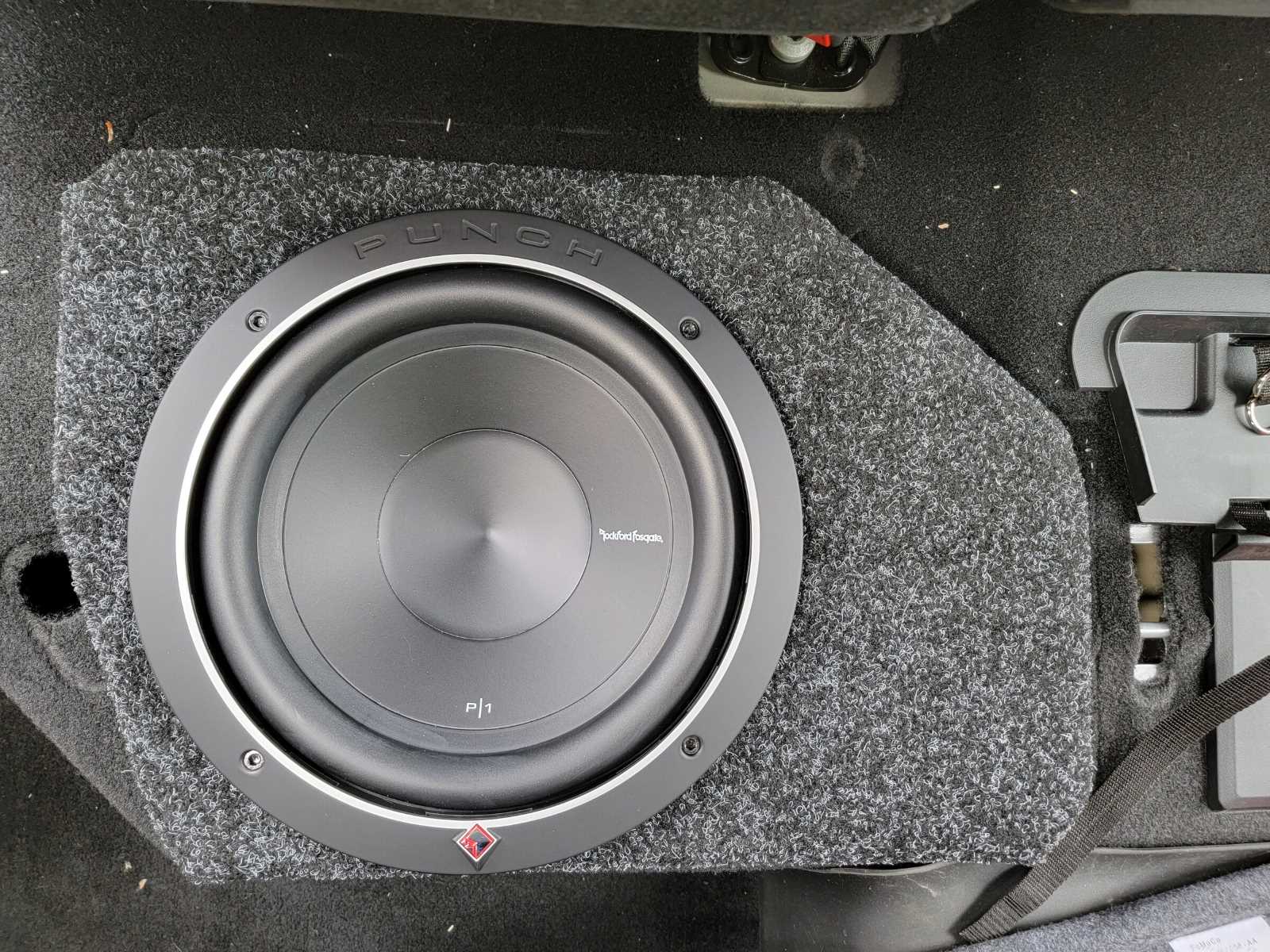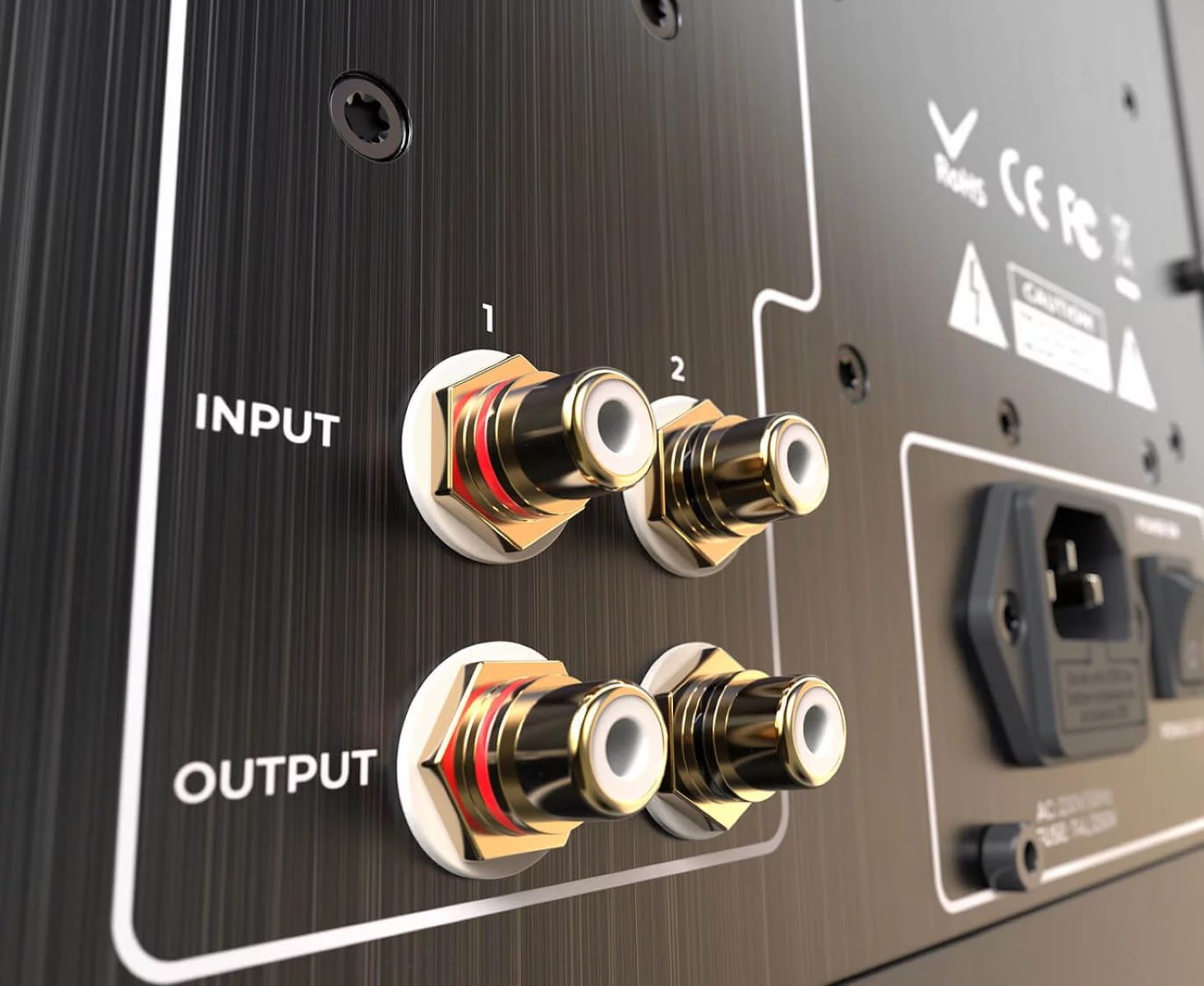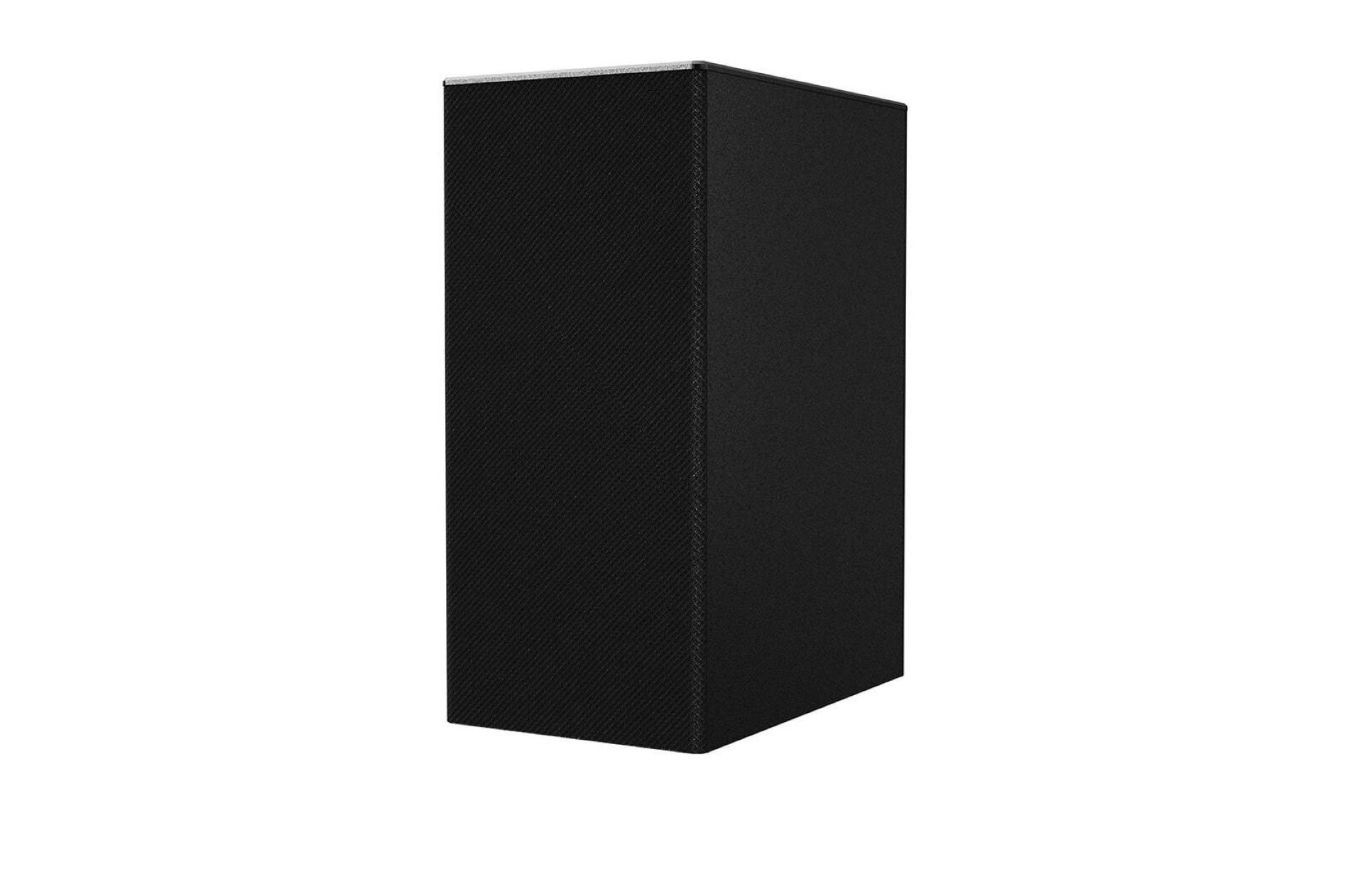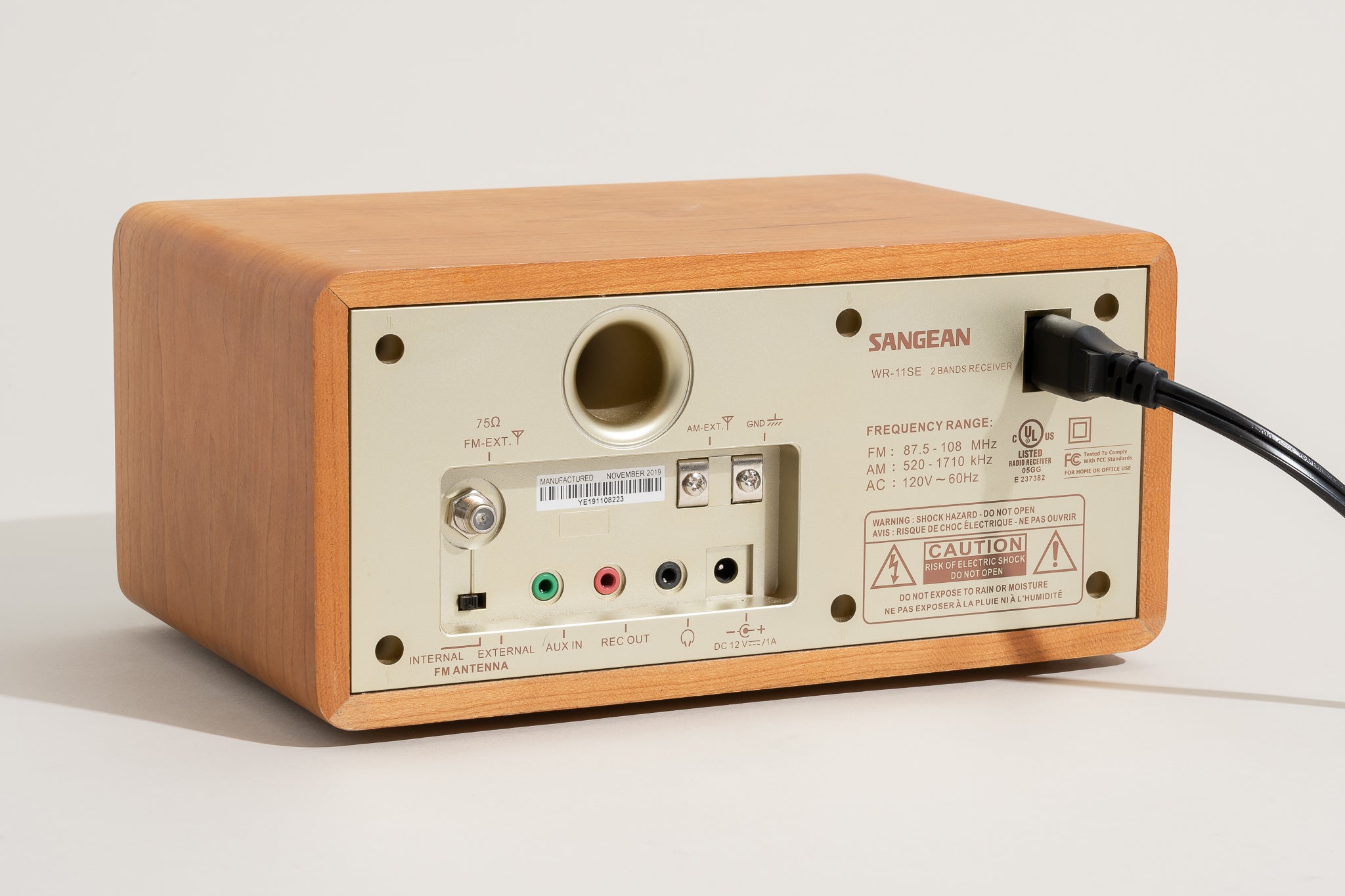Home>Devices & Equipment>Subwoofer>Why Is My Subwoofer So Quiet


Subwoofer
Why Is My Subwoofer So Quiet
Modified: January 22, 2024
Discover why your subwoofer is producing such low volume and learn how to troubleshoot and fix the issue. Enhance your audio experience with our expert tips and tricks.
(Many of the links in this article redirect to a specific reviewed product. Your purchase of these products through affiliate links helps to generate commission for AudioLover.com, at no extra cost. Learn more)
Table of Contents
- Introduction
- Possible Causes of a Quiet Subwoofer
- Check the Subwoofer Connection
- Adjusting the Subwoofer Volume
- Check the Receiver or Amplifier Settings
- Verify the Speaker Setup
- Test the Subwoofer with Different Sources
- Check for Speaker Damage or Defects
- Troubleshooting Tips for a Quiet Subwoofer
- Conclusion
Introduction
So, you’ve invested in a powerful subwoofer to add that extra punch to your audio system, but when you fire it up, you notice something peculiar – it’s quiet. A quiet subwoofer can be a frustrating experience, as it robs you of the immersive bass that makes your music and movies come alive. But fear not, as there are several possible reasons why your subwoofer is not delivering the desired volume.
In this article, we’ll explore the various factors that could be causing your subwoofer to be quiet and provide solutions to help you troubleshoot and fix the issue. Whether you’re a seasoned audiophile or a newbie to the world of audio equipment, this article will help you understand the possible causes and guide you towards getting that powerful bass back.
Before we dive into the troubleshooting, it’s important to note that subwoofers are designed to reproduce low-frequency sounds, commonly referred to as bass. They are responsible for delivering the deep rumble of explosions in movies or the thumping bass lines in your favorite tracks. A properly functioning subwoofer can significantly enhance your audio experience by adding depth and richness to the sound.
Now, let’s explore the possible causes of a quiet subwoofer and the steps you can take to rectify the issue.
Possible Causes of a Quiet Subwoofer
When your subwoofer is not producing the desired volume, there are several factors that could be contributing to the issue. Understanding these possible causes will assist you in pinpointing the problem and resolving it effectively. Here are some common reasons why your subwoofer may be quiet:
- Incorrect subwoofer connection: One of the most common culprits is a faulty or improperly connected subwoofer cable. Make sure the cable is securely connected to both the subwoofer and the audio source. An improperly connected cable can lead to a weak audio signal and result in a quiet subwoofer.
- Low subwoofer volume setting: It’s essential to check the volume level on your subwoofer. If the volume is set too low, it may result in a quiet output. Make sure the volume control is turned up adequately to match your desired listening level.
- Receiver or amplifier settings: The settings on your receiver or amplifier can greatly impact the output of your subwoofer. The crossover frequency, phase control, and level settings should be configured correctly for optimal performance. Incorrect settings may cause a significant reduction in bass output.
- Incorrect speaker setup: If you’re using multiple speakers in your audio setup, it’s crucial to ensure that they are correctly positioned and wired. Incorrect speaker placement or incorrect wiring can lead to sound cancellation or a weak bass response.
- Issues with audio sources: Sometimes, the problem may not lie with your subwoofer at all. It could be a problem with the audio sources you are using. Check different audio sources, such as different CDs, MP3s, or streaming platforms, to rule out the possibility of a low-quality or poorly mixed audio file.
These are just a few potential causes of a quiet subwoofer. It’s important to thoroughly analyze each aspect of your audio setup to determine the root cause of the problem. In the following sections, we’ll guide you through the steps to check and troubleshoot each potential issue to help you resolve the quiet subwoofer dilemma and regain that powerful bass you’ve been longing for.
Check the Subwoofer Connection
One of the first steps in troubleshooting a quiet subwoofer is to check the connection between the subwoofer and your audio system. A faulty or loose connection can lead to a weak or non-existent bass output. Here’s what you can do:
- Inspect the subwoofer cable: Start by examining the subwoofer cable for any visible damage or fraying. If you notice any issues, it’s recommended to replace the cable with a new one to ensure a solid connection.
- Securely connect the subwoofer cable: Ensure that the subwoofer cable is firmly plugged into the corresponding subwoofer input and the audio source or amplifier output. Double-check that the connectors are seated properly and tightened snugly.
- Check the polarity of the speaker wire: If you’re using speaker wire connections instead of RCA cables, verify that the positive (+) and negative (-) terminals on both the subwoofer and receiver/amplifier are connected correctly. A reversed polarity can result in a quieter bass response.
- Consider using a dedicated subwoofer cable: Using a dedicated subwoofer cable with shielded conductors can help minimize interference and improve the signal strength. This can result in a more robust bass output from your subwoofer.
After following these steps, test the subwoofer to see if the volume has improved. If the subwoofer is still quiet, move on to the next troubleshooting step.
Note: If you’re using a wireless subwoofer, ensure that it is properly paired with the audio system. Check the user manual for instructions on how to establish a stable wireless connection between the subwoofer and the receiver or amplifier.
Adjusting the Subwoofer Volume
If your subwoofer is still quiet after checking the connection, the next step is to ensure that the subwoofer volume is set correctly. Here’s what you can do to adjust the subwoofer volume:
- Locate the subwoofer volume control: Depending on your subwoofer model, the volume control knob or button may be located on the front, side, or rear of the subwoofer unit. Consult the user manual to find the exact location.
- Gradually increase the subwoofer volume: Start by setting the subwoofer volume at the lowest level, then gradually increase it while playing audio content with prominent bass. Continuously adjust the volume until you achieve the desired bass level without distortion or overpowering the other speakers.
- Balance the subwoofer with the main speakers: It’s important to maintain a balanced sound mix between the subwoofer and the main speakers. If the subwoofer volume is set too high, it can overpower the other frequencies, resulting in an unbalanced and boomy sound. Experiment with different volume levels until you find the ideal balance.
- Consider using your receiver or amplifier controls: Some receivers or amplifiers have separate controls or equalizer settings specifically for subwoofers. Check the user manual and explore these options to further fine-tune the subwoofer volume and optimize the bass response.
As you adjust the subwoofer volume, remember that the listening environment and personal preference play a role in determining the ideal bass level. Take the time to experiment and find the sweet spot that suits your taste and enhances your overall audio experience.
If adjusting the subwoofer volume doesn’t resolve the issue, proceed to the next section to check the receiver or amplifier settings.
Check the Receiver or Amplifier Settings
If your subwoofer continues to be quiet even after adjusting the volume, the next step is to examine the settings on your receiver or amplifier. Incorrect settings on these devices can have a significant impact on the bass output. Here’s what you can do to check the receiver or amplifier settings:
- Access the audio settings menu: Locate the audio settings menu on your receiver or amplifier. This can usually be done through an on-screen display or a dedicated button on the remote control. Consult the user manual if you’re unsure how to access the settings menu.
- Check the crossover frequency: The crossover frequency determines the point at which low-frequency sounds are directed to the subwoofer. Ensure that the crossover frequency is set appropriately, usually between 80Hz and 120Hz, to ensure a seamless integration between the subwoofer and the main speakers.
- Adjust the phase control: The phase control on the receiver or amplifier allows you to manipulate the timing alignment of the subwoofer’s output with the main speakers. Experiment with different phase settings to achieve the best synchronization and maximize the bass impact.
- Verify the level settings: Ensure that the subwoofer level in the receiver or amplifier settings matches the volume level you desire. Adjusting the level settings will allow you to fine-tune the subwoofer output to your preference.
- Consider enabling dynamic range compression (DRC): Some receivers or amplifiers have a DRC feature that can help improve the audibility of low-level audio content, such as quiet subwoofer outputs. This feature can be especially useful when watching movies at low volume levels.
After making any necessary adjustments to the receiver or amplifier settings, test the subwoofer to see if the volume has improved. If the subwoofer is still quiet, proceed to the next section to verify the speaker setup.
Remember, the specific steps for adjusting settings may vary depending on the brand and model of your receiver or amplifier. Consult the user manual for detailed instructions tailored to your device.
Verify the Speaker Setup
When troubleshooting a quiet subwoofer, it’s crucial to verify the speaker setup to ensure that everything is configured correctly. Incorrect speaker placement or wiring can greatly affect the bass response and overall sound quality. Here’s what you can do to verify the speaker setup:
- Check the speaker positioning: Make sure that the subwoofer and the main speakers are placed properly within your listening environment. Subwoofers are typically designed to be placed on the floor, while the main speakers can be positioned on stands or mounted on the wall. Ensure that each speaker is positioned according to the manufacturer’s recommendations for optimal sound dispersion and bass response.
- Ensure the speakers are connected properly: Double-check the speaker wire connections from the receiver or amplifier to the subwoofer and main speakers. Ensure that each wire is securely connected to the corresponding positive (+) and negative (-) terminals on both ends. Loose or incorrect connections can result in a quiet subwoofer output.
- Verify the speaker sizes and settings: In some cases, the receiver or amplifier may have settings for speaker sizes that impact the subwoofer output. Confirm that the speaker size settings in the receiver or amplifier menu match the actual size of your speakers. Adjusting these settings will allow the audio system to properly direct frequencies to the subwoofer for an optimal bass response.
- Consider using a dedicated subwoofer cable: If you haven’t already, use a dedicated subwoofer cable for the connection between the receiver or amplifier and the subwoofer. These cables are specially designed to transmit low-frequency signals and can help overcome any signal loss or degradation that may occur with regular speaker wires.
By verifying the speaker setup and ensuring that everything is correctly positioned and wired, you can eliminate any potential issues that may be affecting the performance of your subwoofer. Once you’ve confirmed that the speaker setup is correct, test the subwoofer to see if the volume has improved.
If the subwoofer is still quiet, proceed to the next section to test the subwoofer with different audio sources.
Test the Subwoofer with Different Sources
If your subwoofer remains quiet even after verifying the speaker setup, it’s time to investigate the audio sources you are using. Sometimes, the problem may not lie with the subwoofer itself, but rather with the audio content you are playing. Here’s what you can do to test the subwoofer with different sources:
- Try different audio tracks or genres: Play various audio tracks or genres that are known to have prominent bass elements. This can include music genres like hip-hop, electronic, or rock, as well as movies with intense action or bass-heavy scenes. If the subwoofer responds differently with different audio sources, it could indicate that the previously used content had a low bass presence.
- Check the audio settings of your sources: Some audio sources, such as smartphones, computers, or media players, may have their own audio settings that can affect the bass output. Make sure that any equalizer settings, audio effects, or bass boost features are properly configured to enhance the subwoofer performance.
- Use a different audio device: Connect your subwoofer to a different audio device, such as a different receiver, amplifier, or media player, to rule out any issues with the original source equipment. This will help determine if the problem lies within the audio source or the subwoofer itself.
- Consider using a test tone: Some receivers or amplifiers have built-in test tones specifically designed to calibrate the speaker system. These tones usually include various frequencies, including low bass tones. Using a test tone can help identify any irregularities in the subwoofer’s response and assist in fine-tuning the overall sound balance.
By testing your subwoofer with different audio sources, you can determine if the issue lies with the content you are playing or if there are any specific settings that need to be adjusted. If the subwoofer still appears quiet across all sources, proceed to the next section to check for any potential speaker damage or defects.
Check for Speaker Damage or Defects
If your subwoofer continues to have low volume levels even after testing it with different sources, it’s worth checking for any potential speaker damage or defects. Here’s what you can do to assess the condition of your subwoofer:
- Inspect the subwoofer’s physical condition: Examine the subwoofer unit for any visible signs of damage, such as dents, tears, or scratches on the cabinet or the speaker cone. Additionally, check for any loose or disconnected internal components. Physical damage can impact the performance and output of the subwoofer.
- Listen for abnormal sounds: While playing audio through the subwoofer, listen for any unusual noises like rattling, buzzing, or distortion. These sounds can indicate speaker cone damage, loose connections, or other internal issues. If you notice any abnormal sounds, it’s recommended to have the subwoofer inspected and repaired by a professional technician.
- Test the subwoofer in a different system or room: If possible, connect the subwoofer to a separate audio system or try it in a different room. This will help determine whether the issue is specific to the subwoofer itself or if external factors, such as the room acoustics or the main speakers, are contributing to the low volume levels.
- Consider contacting the manufacturer or a professional: If you’ve exhausted all troubleshooting steps and suspect that the subwoofer might have a manufacturing defect or internal damage, it’s best to reach out to the manufacturer for assistance. They may be able to provide further guidance or arrange for a repair or replacement.
Checking for speaker damage or defects is essential to ensure that your subwoofer is functioning optimally. If you discover any issues during this process, it’s crucial to address them promptly to restore the subwoofer’s performance and enjoy the full potential of your audio system.
Keep in mind that if your subwoofer is still under warranty, contacting the manufacturer should be your first course of action. They will be able to guide you through any necessary repair or replacement processes.
Troubleshooting Tips for a Quiet Subwoofer
If you’re still experiencing issues with a quiet subwoofer, here are some additional troubleshooting tips that can help you resolve the problem:
- Reset the subwoofer: Some subwoofers have a reset button or option that restores the device to its factory settings. Resetting the subwoofer can sometimes fix any software or configuration issues that may be causing the low volume levels.
- Update the firmware: Check if there are any firmware updates available for your subwoofer model. Manufacturers occasionally release firmware updates that can address performance issues and improve functionality. Follow the instructions provided by the manufacturer to update the firmware accordingly.
- Try a different power outlet: Connect your subwoofer to a different power outlet to rule out any electrical issues or power fluctuations that could be affecting its performance. Sometimes, a low-voltage power supply can result in reduced sound output.
- Check for interference: Move any electronic devices or appliances, such as Wi-Fi routers, cordless phones, or microwave ovens, away from the subwoofer. These devices can cause electromagnetic interference that disrupts the subwoofer’s performance. Keep the subwoofer away from any potential sources of interference.
- Consider using an audio equalizer: An audio equalizer can be utilized to boost specific frequencies, including the low-end bass frequencies. Experiment with the equalizer settings to enhance the bass response of your subwoofer, ensuring you don’t overcompensate and create distortion.
By following these troubleshooting tips, you can narrow down the potential causes of a quiet subwoofer and improve its performance. Keep in mind that not all solutions may apply to your specific setup, as subwoofers and audio systems can vary. If the issue persists, it’s advisable to consult with a professional audio technician who can provide further assistance based on your unique circumstances.
Remember, troubleshooting a quiet subwoofer is a process of elimination, and it may take some time and patience to identify and resolve the underlying issue. The key is to systematically troubleshoot each potential cause and make necessary adjustments or repairs as needed.
Conclusion
A quiet subwoofer can be a frustrating experience, but with the right troubleshooting steps, you can often resolve the issue and restore the powerful bass that brings your audio system to life. Throughout this article, we have explored various possible causes of a quiet subwoofer and provided solutions to help you diagnose and fix the problem.
It’s important to start by checking the subwoofer connection, ensuring that the cables are securely connected and that the polarity is correct. Adjusting the subwoofer volume and verifying the settings on the receiver or amplifier can also have a significant impact on the subwoofer’s output. Additionally, confirming the speaker setup and testing the subwoofer with different audio sources can help pinpoint any specific issues.
If these steps don’t resolve the problem, it’s worth checking for any signs of speaker damage or defects and contacting the manufacturer or a professional if necessary. Additionally, following troubleshooting tips such as resetting the subwoofer, updating the firmware, and minimizing potential sources of interference can be beneficial in resolving the issue.
Remember, troubleshooting a quiet subwoofer requires patience and perseverance. It may require a combination of these steps or even seeking expert assistance to diagnose and resolve the problem properly.
By following the guidelines provided in this article, you can take the necessary steps to troubleshoot and fix a quiet subwoofer. Regardless of the specific cause, understanding the potential issues and systematically addressing them will help you achieve the immersive and powerful bass that enhances your audio experience.
Now, armed with knowledge and troubleshooting techniques, you can confidently tackle any issues with your subwoofer’s volume and enjoy the full potential of your audio system.











